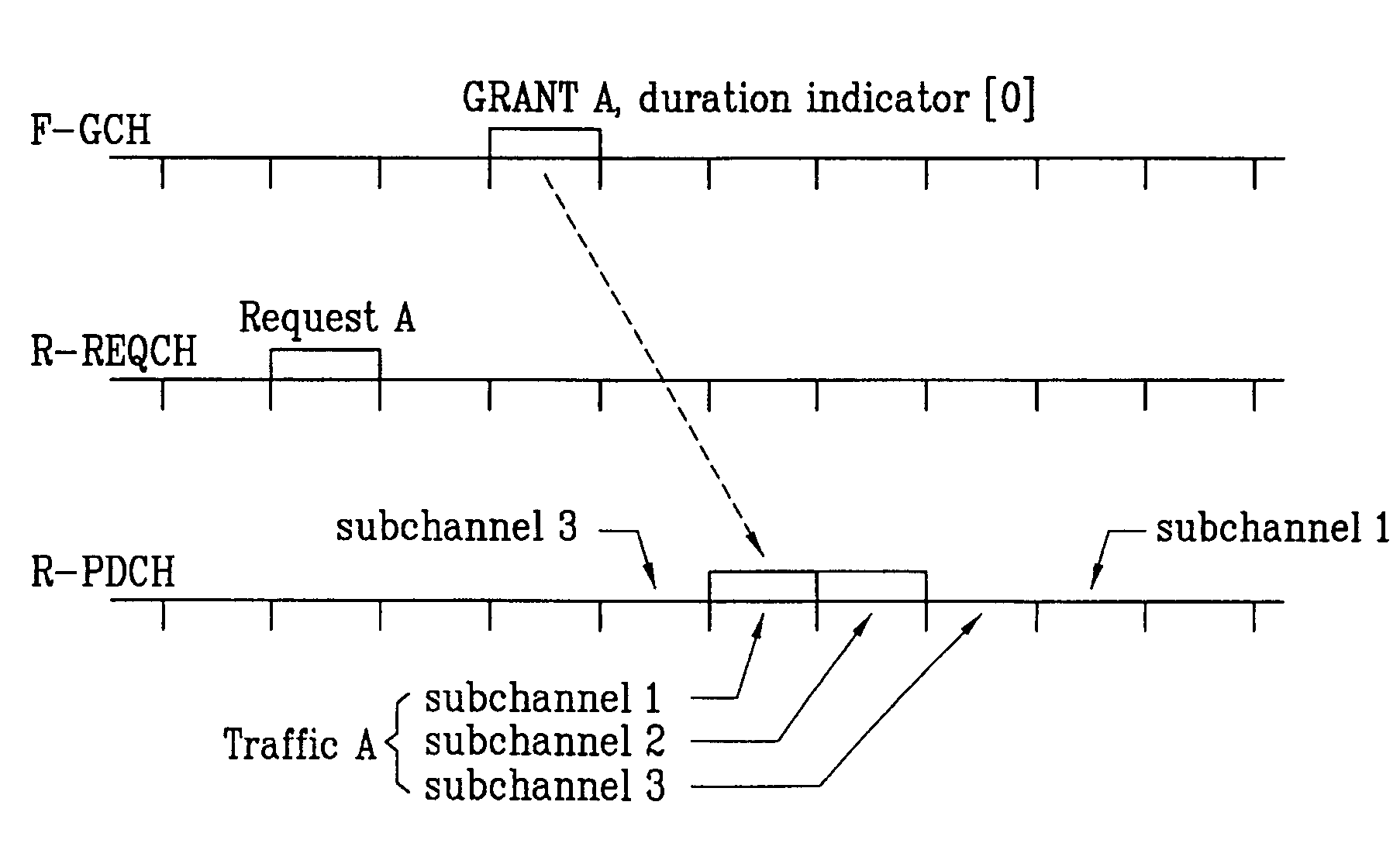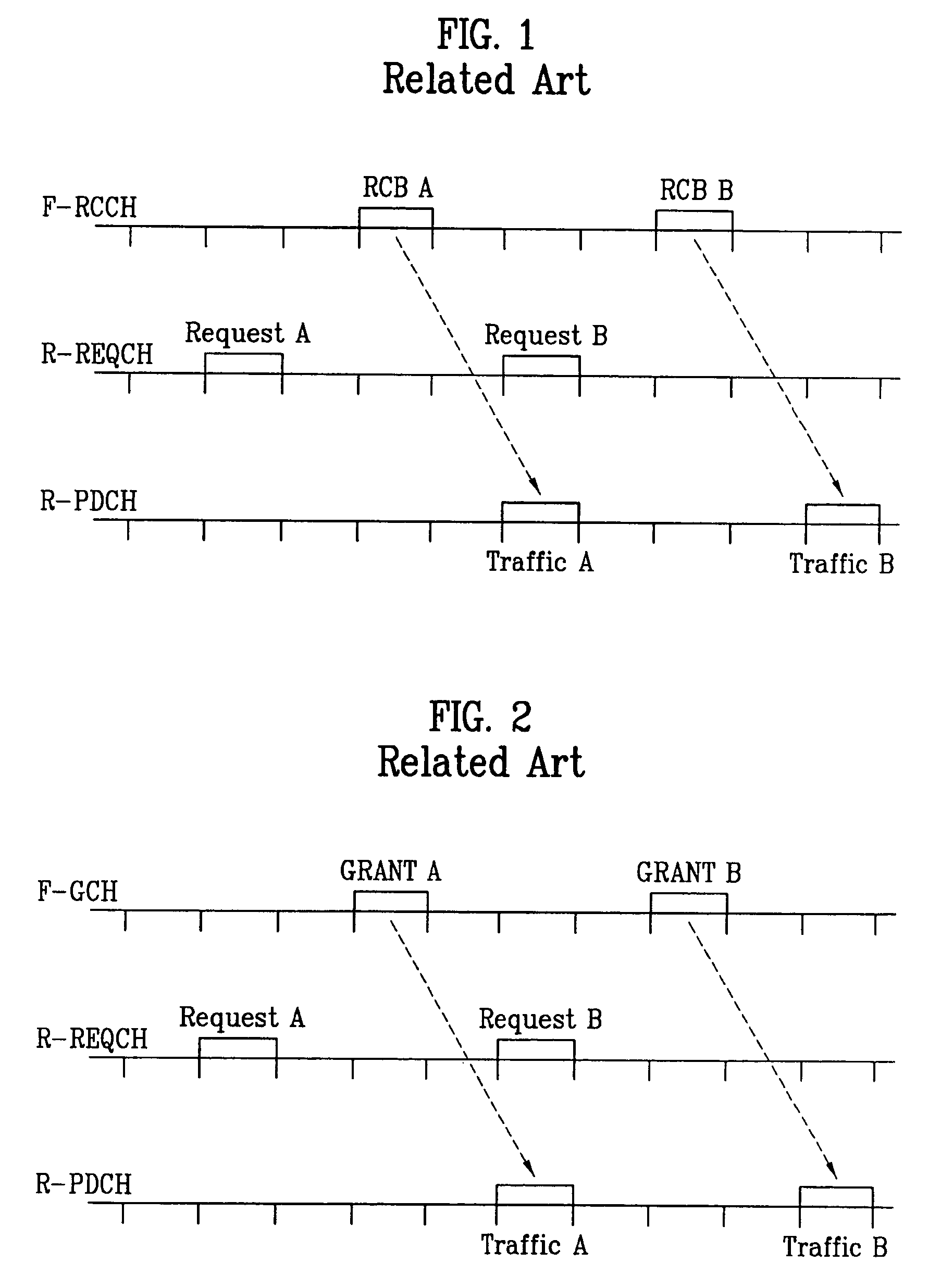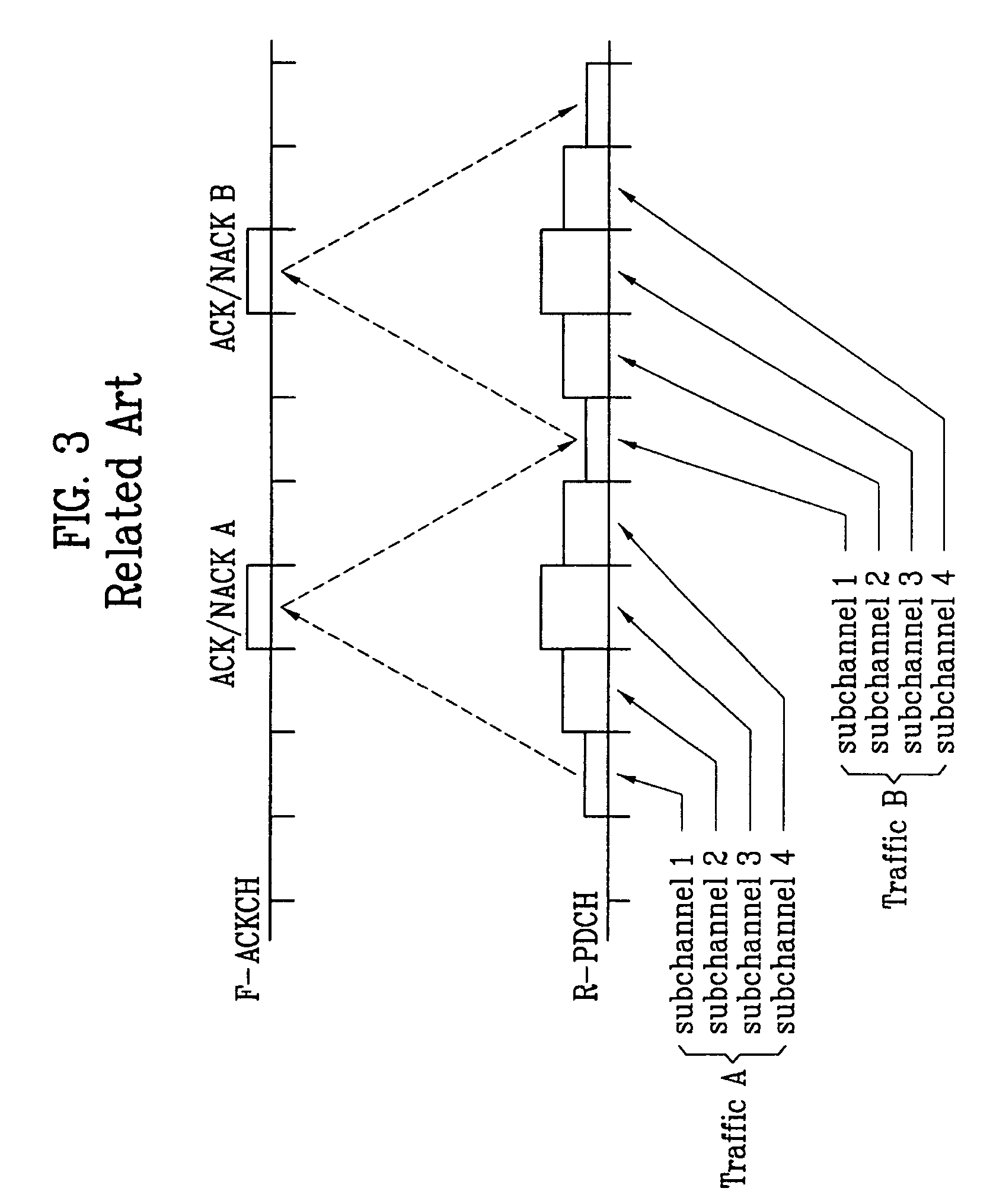Reverse link data rate control method in mobile communication system
a mobile communication system and data rate control technology, applied in the field of radio mobile communication system, can solve the problems of unnecessarily consuming transmission power and the entire system may become unstable, and achieve the effect of reducing interferen
- Summary
- Abstract
- Description
- Claims
- Application Information
AI Technical Summary
Benefits of technology
Problems solved by technology
Method used
Image
Examples
first embodiment
[0034]According to a first preferred embodiment, the duration indicator is contained in a one-bit or two-bit field of the grant message. The one-bit field enables application to traffic occupying three subchannels, as shown in Table 1, and the two-bit field enables application to traffic occupying three or four subchannels, as shown in Table 2. These bit fields, however, are merely exemplary, and the method of the present invention in accordance with the first embodiment may be implemented using a duration indicator of other lengths, and one or more such tables according to the present invention may be stored, for example, in the base station.
[0035]
TABLE 1durationbit field(three subchannel assignment)01 frame12 frames
[0036]
TABLE 2durationdurationbit field(three subchannel assignment)(four subchannel assignment)000 frames0 frames011 frame1 frame102 frames2 frames11X3 frames
[0037]Referring to the above tables, each duration indicator (bit field value) indicates a duration expressed in...
second embodiment
[0045]According to a second preferred embodiment, the duration indicator is contained in a two-bit or three-bit field of the grant message. The two-bit field enables application to traffic occupying three subchannels, as shown in Table 3, and the three-bit field enables application to traffic occupying four subchannels, as shown in Table 4. These bit fields, however, are merely exemplary, and the method of the present invention in accordance with the second embodiment may be implemented using a duration indicator of other lengths, and one or more such tables according to the present invention may be stored, for example, in the base station.
[0046]
TABLE 3rate assignmentrate assignment(subchannel 2,(subchannel 3,bit fieldframe + 1)frame + 2)00not appliednot applied01not appliedapplied10appliednot applied11appliedapplied
[0047]
TABLE 4rate assignmentrate assignmentrate assignment(subchannel 2,(subchannel 3,(subchannel 4,bit fieldframe + 1)frame + 2)frame + 3)000not appliednot appliednot a...
PUM
 Login to View More
Login to View More Abstract
Description
Claims
Application Information
 Login to View More
Login to View More - R&D
- Intellectual Property
- Life Sciences
- Materials
- Tech Scout
- Unparalleled Data Quality
- Higher Quality Content
- 60% Fewer Hallucinations
Browse by: Latest US Patents, China's latest patents, Technical Efficacy Thesaurus, Application Domain, Technology Topic, Popular Technical Reports.
© 2025 PatSnap. All rights reserved.Legal|Privacy policy|Modern Slavery Act Transparency Statement|Sitemap|About US| Contact US: help@patsnap.com



